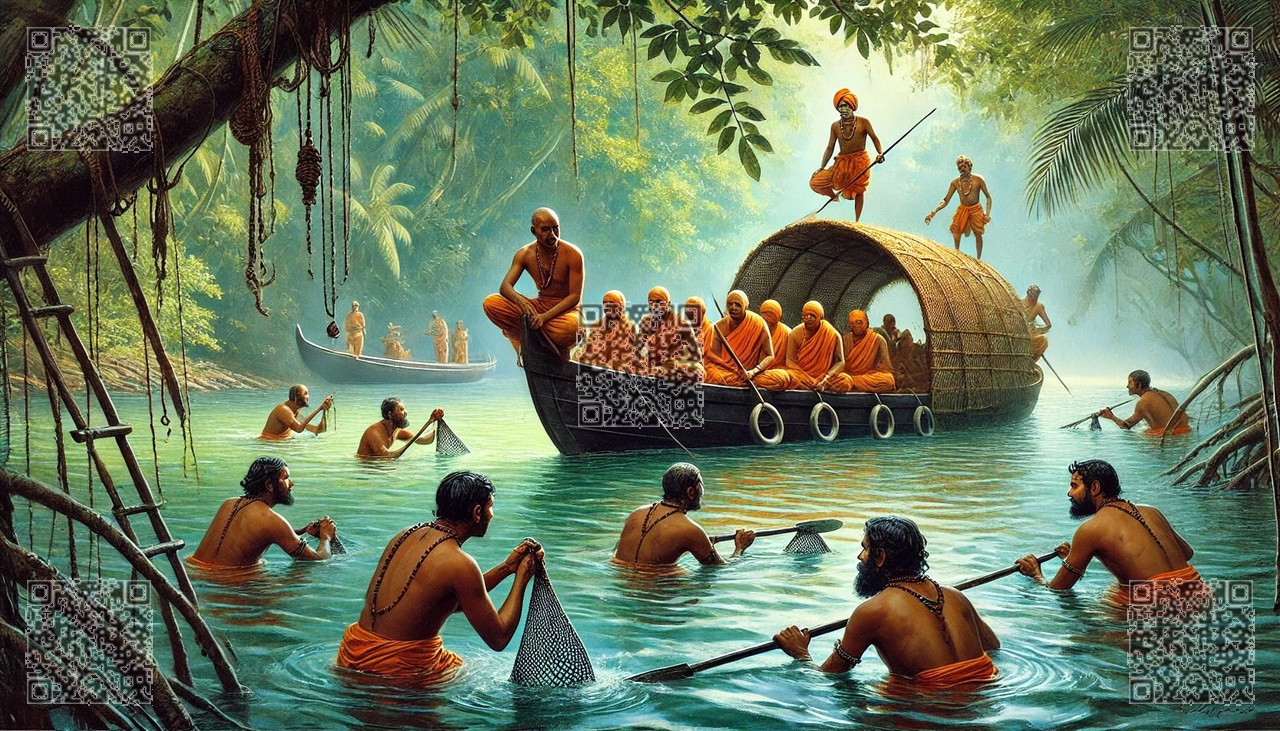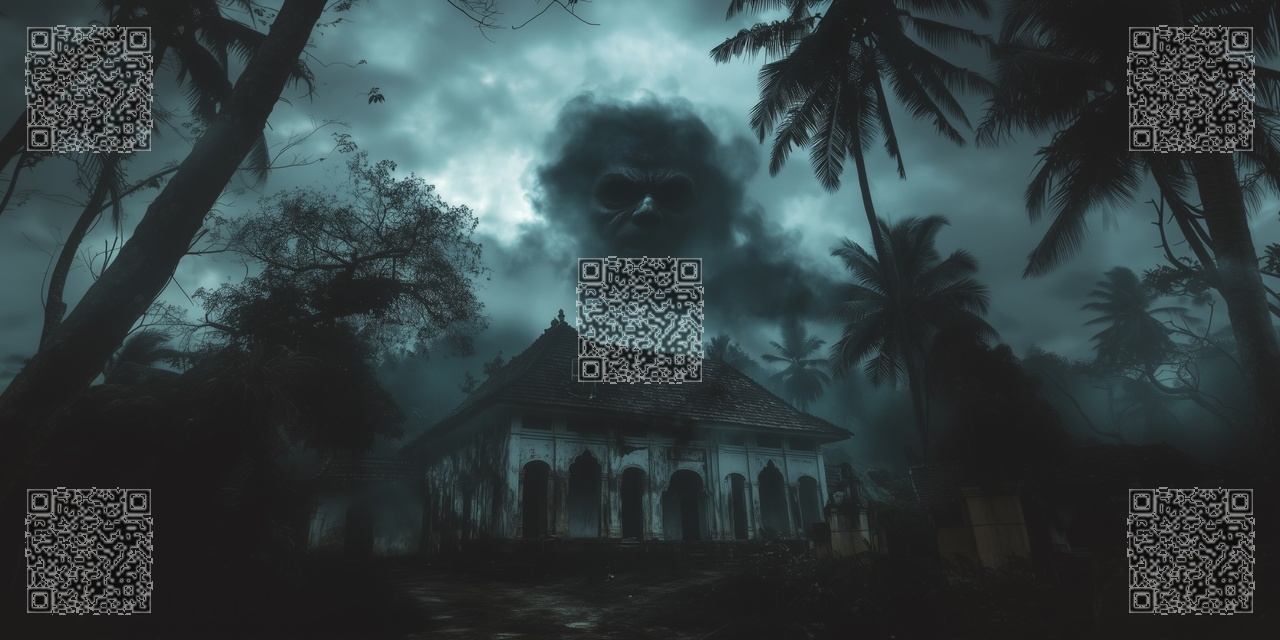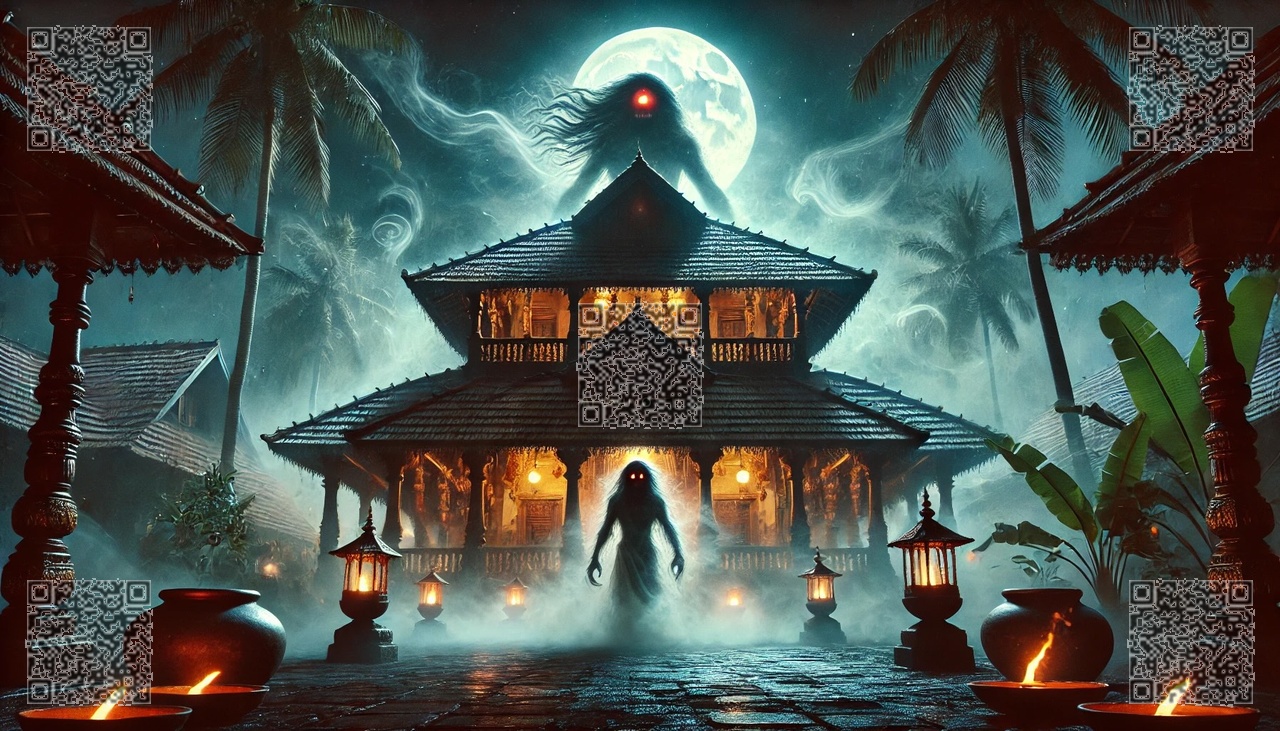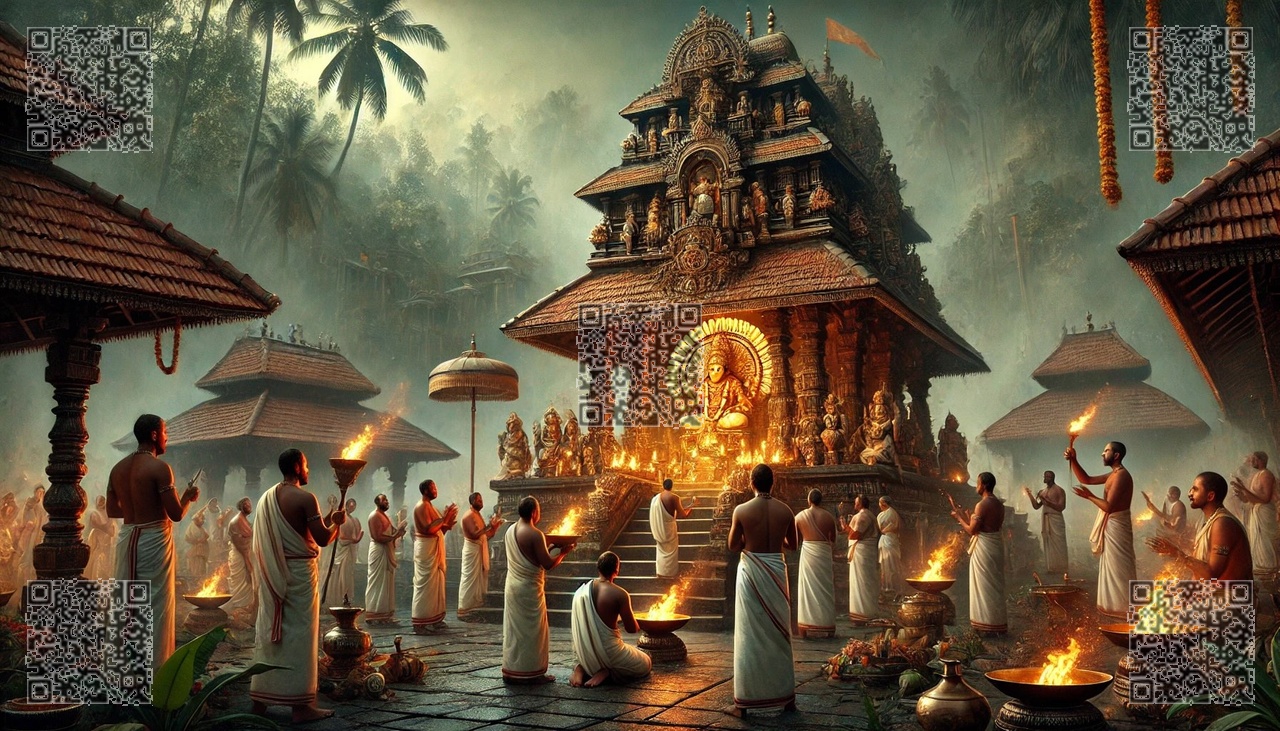The villages around Thattarampalam has long been shrouded in whispers of betrayal and vengeance, with tales centering around the feud between the Alummoottil Tharavad and the Cherupadalam Mana. At the heart of these stories lies a chilling series of events that culminated in tragedy and the rise of a vengeful spirit—the Brahmarakshas. Ambition, betrayal, and redemption fueled its rise.
The Cherupadalam Mana and Thattarampalam
The Cherupadalam Mana, located near the sacred Thattarampalam (Temple), was a prestigious Brahmin (Potti) family known for its religious devotion and ancestral pride. The Mana’s lands were closely tied to the temple and considered sacred by the family and the surrounding community. Generations of Cherupadalam Brahmins had performed rituals at Thattarampalam, earning the family respect and reverence.
By Kollavarsham 1025 (AD 1849), the Cherupadalam family found themselves at odds with Mathevan Channar (II), the ambitious patriarch of the Alummoottil Tharavad. Channar sought to acquire the fertile lands owned by the Mana to expand his family’s influence. However, the Cherupadalam patriarch firmly rejected Channar’s repeated offers.
“These lands are consecrated to the temple,” Cherupadalam Brahmadattan Potti, the head of the Mana, said. “They are not for sale at any price.”

The Shadow of Conflict
Frustrated by the Brahmins’ refusal, Mathevan Channar turned to his trusted lieutenant, Koma Kurup, the master of the eastern Kalaris and a tactician skilled in unconventional warfare. Together, they devised a covert plan to force the Brahmins’ hand. However, their decision to act would unleash a cascade of horrors.
Channar made three formal attempts to negotiate with the Cherupadalam family, each met with firm resistance. This public stalemate led villagers to speculate that Channar might resort to sorcery, a craft for which he was already notorious. Behind closed doors, however, Koma Kurup had a more direct strategy in mind.
“The Brahmins often travel by boat to perform rituals at Thattarampalam,” Kurup observed. “We can intercept them on the river. The attack must be silent, precise, and appear as an accident. No one should suspect our hand in this.”
The Amphibious Guerrilla Attack
The attack was meticulously planned with military precision. Kurup’s team consisted of men trained in aquatic maneuvers, each assigned specific roles. They studied the Brahmins’ routine over weeks, noting the exact timings of their travel, the type of boat they used, and the water currents.
On the night of the attack, Kurup deployed three small dugout canoes positioned strategically upstream. Each canoe carried two operatives equipped with weighted nets, paddles designed for silent movement, and ballast to stabilize their crafts. The river was scouted in advance to identify narrow bends where the ambush could be executed without being observed from the banks.
As the Brahmins’ boat approached, one team moved to block its path, feigning a fishing operation. The second team maneuvered behind the boat, cutting off any retreat. The third team, positioned under the cover of overhanging branches, moved in to deploy the nets. Once the nets immobilized the oars, two operatives dived underwater, loosening the boat’s ballast and destabilizing it. Finally, a coordinated push from both sides caused the boat to capsize.

The Brahmins, wearing ceremonial attire heavy with gold-threaded fabrics, struggled against the current. Their cries for help echoed briefly before being swallowed by the dark waters. Among the victims was Narayanan, the youngest priest of the Cherupadalam family, who invoked a powerful curse with his dying breath.
“May the sin of Brahmahatya bind this land,” he gasped. “Let no peace come to those who have spilled innocent blood.”
Brahmahatya: The Curse of Killing Brahmins
The deaths of the Cherupadalam Brahmins reverberated through the village. The community viewed the tragedy as a result of the unforgivable sin of Brahmahatya—the killing of Brahmins. Rumors spread that Channar’s sorcery had capsized the boat. The truth, however, was far more sinister: a calculated amphibious attack led by Koma Kurup.

Superstitions and beliefs that the weight of the curse manifested into misfortunes. Crops in the Alummoottil lands withered, livestock perished, and eerie occurrences plagued the Tharavad. Members of Channar’s family awoke from nightmares drenched in sweat, haunted by visions of drowning Brahmins.
The Rise of the Brahmarakshas
By Kollavarsham 1028 (AD 1852), reports of sightings of a terrifying entity began to surface. The Brahmarakshas, a spirit born of Brahminic rites and violent death, was rumored near the Cherupadalam lands. Its fiery eyes and chilling cries struck fear into all who encountered it. The villagers, too afraid to approach, turned to Channar for a solution.

“You have unleashed this curse,” the village’s elders accused the Alummoottil chieftains. “It is your responsibility to save the villages from it”
The Installation at Thekkedath Temple
Desperate, Channar consulted with priests and exorcists. They advised him that the Brahmarakshas could not be destroyed but must be appeased and installed as a deity to channel its wrath into protection. In Kollavarsham 1030 (AD 1854), an elaborate ceremony was conducted at the Thekkedath Temple.

The Cherupadalam lands were formally donated to the temple as part of the atonement. The Brahmarakshas was invoked and ceremonially installed as a guardian deity. Ritual offerings, including lamps, flowers, and daily prayers, were mandated to pacify the spirit.
The installation transformed the Brahmarakshas from a vengeful presence into a revered protector. Thekkedath Temple became a place of worship, where devotees sought blessings and protection from the once-feared spirit.
Restitution and Redemption
To further atone for the sin of Brahmahatya, Channar mandated annual rituals to honor the deceased Brahmins and uphold their legacy. Though the haunting ceased, the Alummoottil Tharavad bore the burden of guilt for generations.

Legacy
The Thekkedath Temple stands as a testament to the events that unfolded, its sanctum enshrining the spirit of the Brahmarakshas. The Cherupadalam lands, now temple property, thrive as a sacred grove. The tale of Mathevan Channar and the Brahmarakshas endures, a chilling reminder of the price of ambition and the power of redemption. Members of the Alummoottil family still do penances to the Cherupadalam mana annually to this day hoping the Brahmarakshas will not continue tormenting their next generations.



